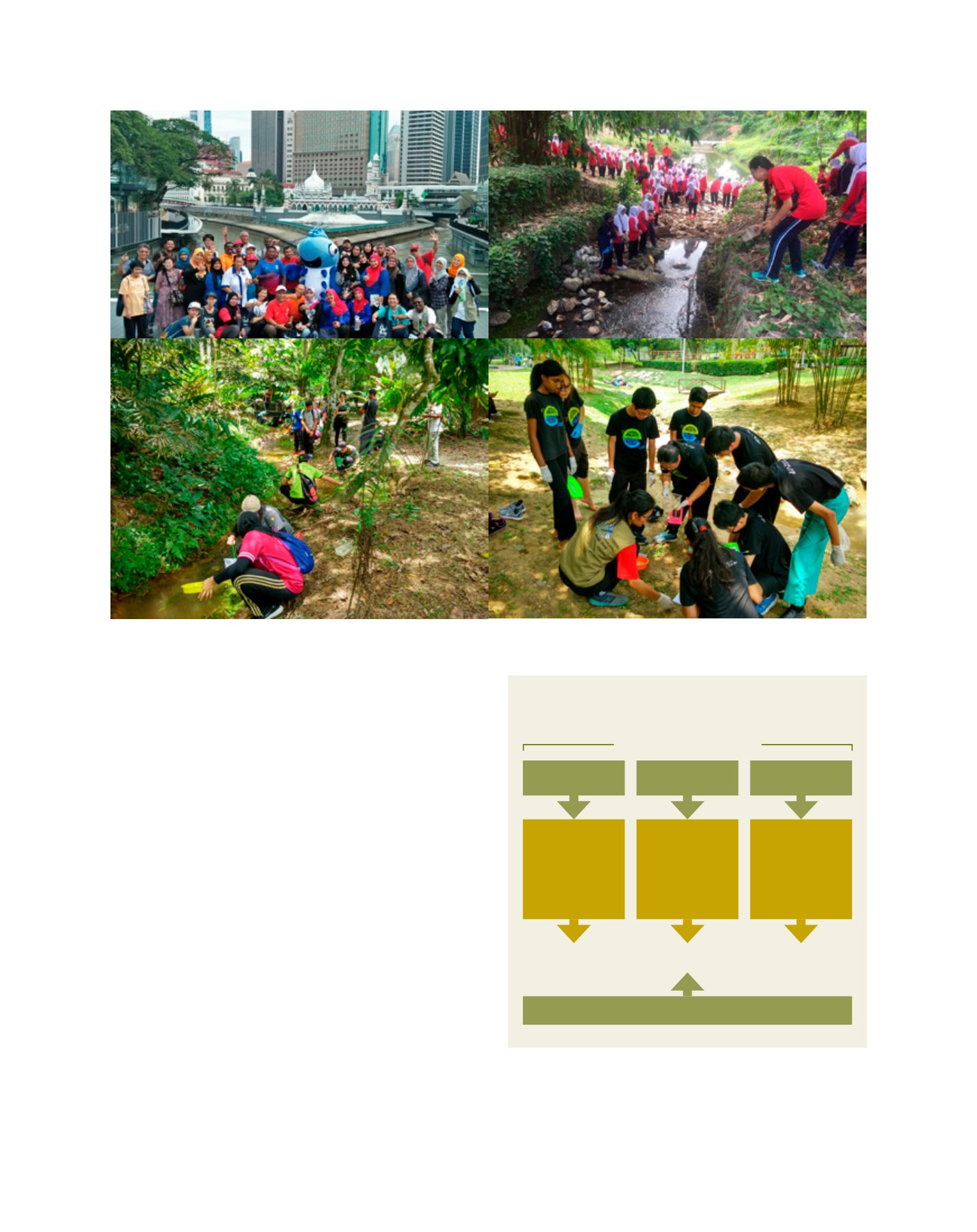

[
] 99
access
to
water
and
sanitation
for
all
4
Management instruments
: A further five recommenda-
tions to stress the need for the establishment of a central
IWRM database built around river basin platforms; the
use of economic, financial and technical instruments for
greater water use efficiency and accountability and to curb
abuse; the implementation of a national agenda for inte-
grated water research; the provision of mechanisms for
promoting green growth; and the pooling of resources to
establish one-stop capacity building centres to improve
skills and raise competence at all levels.
5
Investment in water infrastructure
: Urgent investment
in water infrastructure is recommended to cater for the
national water sector needs and to spur the sector’s trans-
formation. 15 major programmes with a corresponding
95 Entry Point Projects (EPPs) were identified and broken
down into three sub-programmes, namely: five cross-
cutting programmes involving 14 EPPs, five programmes
related to Water as a Resource involving 48 EPPs, and five
programmes related to Water for Livelihood involving a
further 33 EPPs.
6
NIWRMP implementation management structure
: A
recommendation for the plan to be managed nation-
ally at the highest political level by the National Water
Resources Council, and at state level by the State Water
Resources Council, with the support of a National
Steering Committee (NSC) to oversee the implementa-
tion, and assisted by a National Technical Committee to
resolve technical issues. Formation of a dedicated IWRM
Implementation Unit is also recommended, reporting to
the NSC to ensure the timely and coordinated implemen-
tation of the plan.
Integrated water resources management –
general framework
Economic
efficiency
Management
instruments
•Assessment
• Information
•Allocation
• Instruments
Enabling
environment
•Policies
• Legislation
Institutional
framework
•Central – local
•River basin
•Public – private
Equity
Environmental
sustainability
Balance ‘Water for Livelihood’ and ‘Water as a Resource’
Investment in water infrastructure
Balancing development goals
Community-based river care programmes. (Top left) river adoption activity involving urban communities; (Top right) awareness-raising activities targeting school
children; (Bottom left) river quality monitoring by local communities; (Bottom right) river quality assessment involving schools
Images: ASM
Source: ASM
















